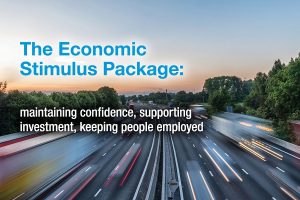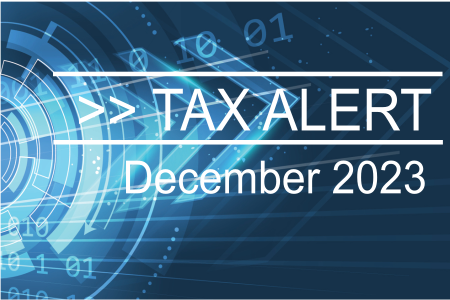By now you’re probably aware that the Federal Government has announced a $17.6 billion (now $83.6 billion) stimulus package. One designed to “protect the economy by maintaining confidence, supporting investment and keeping people in jobs”.

If you’re wondering what that might mean for you, here’s a brief guide to the four major components of the stimulus package. i
Payments to lower-income households
Post-GFC, the Rudd Government sent $900 cheques to adult Australians earning less than $80,000.ii The Morrison Government is doing something similar by providing Newstart recipients, age pensioners and veterans a one-off payment of $750. These payments will start flowing into the bank accounts of 6.5 million (mainly) lower-income Australians from March 31. While most working Australians won’t receive this payment, this type of tightly targeted payment will provide maximum bang for buck in terms of stimulating the economy.
This was later boosted to include an extra once off payment of $750 for eligible recipients from 13 July 2020.
Cashflow assistance to business
Business owners and their employees have also been well-catered for in the stimulus package.
Small and medium-sized businesses that employ staff and have a turnover of less than $50 million will be eligible for tax-free payments of between $2,000-$25,000.
This was later boosted to be between $20,000-$1000,000 tax free payments.
It’s estimated this ‘Boosting Cash Flow for Employers’ measure will benefit 690,000 businesses that collectively employ 7.8 million people. Given there’s a $25,000 (now $100,000) ceiling on the payment regardless of the size of a business’s workforce, it’s a measure that will benefit smaller businesses much more than medium-sized ones.iii
Business owners who employ apprentices and trainees are also eligible to apply to have the Government pay half their wage for the first nine months of 2020. It’s estimated this measure will assist 70,000 business and 117,000 apprentices and trainees.
While it’s a separate initiative, the Government’s provision of modest financial support for casual workers who contract Coronavirus will directly benefit those casual workers and indirectly benefit their employers. Without this payment to casuals, employers might have, for instance, had to worry about infected staff turning up to work out of financial desperation.iv
Support for business investment
The government is loosening the criteria around the instant asset write-off. Pre-Coronavirus, businesses with a turnover of up to $50 million could instantly write-off the purchase of assets costing up to $30,000. Post-Coronavirus, businesses with a turnover of up to $500 million can write off asset purchases of up to $150,000.
On top of this, the Government has also accelerated depreciation deductions for the next 15 months. Up until June 30, 2021, businesses turning over less than $500 million will be able to deduct 50 per cent of the cost of any eligible asset the moment it’s installed. It’s predicted these two tweaks to the investment rules could benefit up to 3.5 million businesses that collectively employ almost 10 million Australians.
Assistance for regional Australians
Regional Australia, already laid low by drought and bushfires, will be disproportionately impacted by Coronavirus. Many regional economies are dependent on the industries – tourism, education and agriculture – most affected by the pandemic. It’s yet to provide much detail, but the Government has promised to spend $1 billion propping up the nation’s regional economies.
The end of the beginning
There’s broad agreement the Government’s stimulus package has been well-designed and will reduce the chance of Australia slipping into its first recession in three decades. But with share markets across the globe increasingly volatile and countries closing their borders, Australia is in unchartered territory and there may well be further changes to Australia’s economic policy settings in months to come.
If you have any queries in relation to how the above measures may apply to your circumstances, please do not hesitate to contact our office.
i Unless otherwise end noted, all the facts, figures and claims in this article come from the CommSec Economic Stimulus Package document
ii https://finance.nine.com.au/personal-finance/900-cash-bonus-who-gets-it/facdc354-9a48-4e9e-850c-2bb8705dbe29
iii https://treasury.gov.au/sites/default/files/2020-03/Fact_sheet-Assistance_for_businesses.pdf
iv https://www.smh.com.au/politics/federal/casual-workers-face-wait-up-to-13-weeks-for-coronavirus-payment-20200312-p549cj.html
Did you enjoy this article?
Click below to share it
More News Articles

Retirement Planning: It’s Not all About the Money
Retirement is often a massive life change for the majority of people who experience it

FBT – How Fringe Benefits Tax Works
FBT is separate to income tax. It’s calculated on the taxable value of the fringe benefit

Tax Alert December 2023
The ATO is getting back to business with it’s lenient approach during the pandemic over, it’s focus now is returning to traditional debt collection

How a Super Recontribution Strategy Could Improve Your Tax Position
The main reason for implementing a recontribution strategy is to reduce the taxable component of your super and increase the tax-free component

Rental investor? How to Get Your Tax Return Right
Extra care is needed when lodging returns with rentals

What to do if You’ve Been Scammed
Know that you are not alone and you can recover from this. There is support available, if and when you need it
Connect Through our Socials
While you may have come to us from a variety of sources, the time has never been better to join us.
Connect through out socials to keep up to date with our latest news and get some tips.




